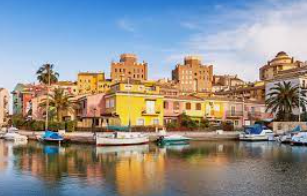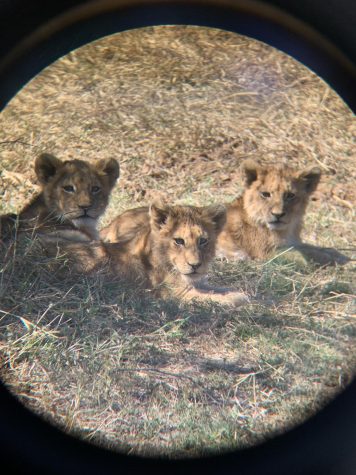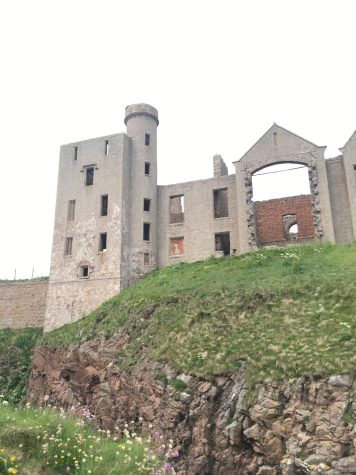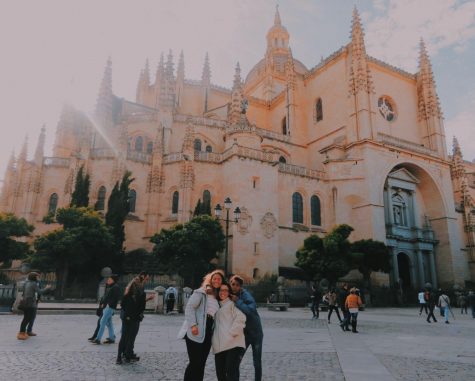Christmas Around the World
How Christmas is celebrated in other countries
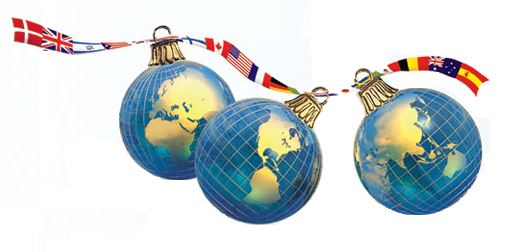
Across the globe, more than 160 nations celebrate Christmas
Throughout the month of December, Christians around the world celebrate Christmas in their own unique ways.
Austria
Austrians go all-out when it comes to Christmas festivities and enjoying the holiday season. Across Austria, most cities host a ‘Christkindlmarkt’, or Christmas market, where traditional Christmas ornaments, sweet treats, and mulled wine are sold. The most extravagant of these markets are located in Austria’s largest and most popular cities such as Vienna, Salzburg, and Innsbruck and attract millions of visitors every year.
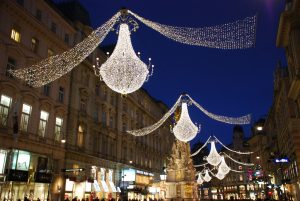
Traditionally, most Austrian villages and towns have a large Christmas tree which the entire village cherishes. In the homes of Austrians, families bring a Christmas tree into their home on Christmas Eve. Christmas trees are decorated with real candles, stars made of straw, silver and gold stars, and sweets for the children.
It is believed by children in Austria that on Christmas Eve a golden-haired baby with wings called ‘Christkind’ brings presents and leaves them under the tree. Austrian children also receive presents on December 6th from St. Nicholas. On the 6th, it is believed Krampus, a demonic counterpart to St. Nicholas for naughty children, also comes around and swats children with sticks before stuffing them into a bag and taking them away.
The Netherlands
Primary celebration of Christmas in The Netherlands occurs on St. Nicholas’ Eve on December 5th. Children are told that on this day Sinterklaas, the Dutch version of Santa Clause, brings them presents. It is said that Sinterklaas lives in Spain, and every year when he comes to deliver gifts he arrives in a different port city in The Netherlands so that more children have a chance to see him. According to legend, Sinterklaas has a group of helpers called Zwarte Pieten who keep track of the good and bad children. Supposedly, bad children are not given gifts and are instead put into a sack and taken to Spain for a year to be taught how to behave.
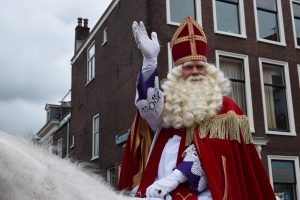
Christmas Day in the Netherlands is much less eventful than the arrival of Sinterklaas on the 6th. On Christmas, families typically will go to a church service and enjoy and family meal. The traditional meal families have on Christmas day is known as ‘Gourmetten’, and involves placing a small hot plate in the center of the table and everyone cooking small bits of food on it for themselves. Also, while children have recieved the majority of their gifts before Christmas, the Dutch still celebrate the arrival of Santa Clause on Christmas Eve who they believe arrives from Finland to deliver more presents.
Christmas in the Netherlands is an amazing time full of lights, treats, and Christmas trees!
— John Conley
Mexico
The Christmas season in Mexico lasts from December 12th to January 6th. Throughout this time, one of the most enjoyed holiday celebrations is the Posada Processions. These processions are meant to celebrate the search of Mary and Joseph to find shelter in the bible. The children process around the streets stopping at homes and singing songs about Mary and Joseph searching for a room. The children continue singing house by house until they find the Posada house, the home hosting a party for the kids with games, fireworks, and food. At the Posada parties, one of the most popular games played is piñata.

Another common Christmas tradition in Mexico is the creation of ‘nacimiento’, which are large nativity scenes that feature life-size figures. Often, the nativity scenes take up an entire room in homes. The scenes feature typical biblical figures as well as images of Mexican life, including woman making tortillas. While the popularity of the Christmas tree in Mexico is rising, the most common decoration is the nacimiento.
On Christmas Eve, families typically share a traditonal meal together comprising of such dishes as ‘bunuelos’, fried pastries sprinkled with sugar and cinnamon or a hot sugar syrup, and tamales. At midnight, families will typically proceed to a mass service to celebrate the arrival of Christmas Day.
New Zealand and Australia
In New Zealand, the Christmas season arrives in the heat of the summer. Due to the season, typically many New Zealanders spend their holiday break at the beach. The ideal weather allows children the perfect conditions to try out all of the new toys and gifts they receive for Christmas.
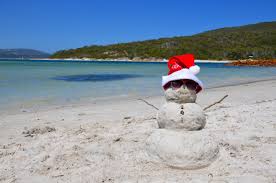
Today, one of the most popular traditions is to enjoy a barbecue on Christmas Day. For the Barbecue, there is an emphasis on healthy food, and seasonal vegetables, fresh seafood, and salads are eaten. On Christmas Day, New Zealanders also enjoy many hot and cold deserts. Some typical treats include hot fruit puddings with ice cream, pavlovas, and meringue.
Australians celebrate Christmas in a similar fashion to Americans. Specifically, homes are decorated with festive lights, Christmas trees, and wreaths. Also, on Christmas Eve Christmas carols are often sung around neighborhoods. One very distinct element to the Australian celebration of Christmas is the placement is bundles of a native Australian tree with cream-colored flowers and green leaves called ‘Christmas Bush’ around homes.
Greece
Throughout the Christmas season, the holiday spirit is most evident in Aristotelous Square in Thessaloniki, Greece where a huge Christmas tree and large ships covered in lights are enjoyed by locals and tourists. Across Greece, boats are a traditional theme incorporated into decorations in many cities. In the later part of the 20th century, Christmas trees became increasingly popular, even more-so than decorative boats.

Often, Greek families share a large meal on Christmas which typically consists of such foods as spinach and cheese pies, pork, lamb, and vegetables. Other deserts enjoyed during the Christmas season include baklava, theeples, and kataifi. Baklava are also quite popular in the United States and are composed of a filo dough filled with nuts and a sweet syrup. Another traditional food served for Christmas is ‘Christopsomo’, a decorative sweet loaf with a cross on top.
A staple of a traditional Greek Christmas is also the presence in homes of a small bowl with a wire across the top and a cross wrapped in basil hanging from it. Throughout December, the family takes the cross and dips it into holy water and sprinkles drops around the house. The water is believed to ward off the ‘kallikantzaroi’, or bad spirits. These evil spirits are thought to come from the center of the Earth and enter into people’s home through their chimney and commit such crimes as putting out a fire. The kallikantzaroi are pests from Christmas through epiphany.
Today, Christmas is celebrated in a variety of ways around the world and every country and region has its own unique traditions. Although celebrations of Christmas are diverse, the holiday season serves as a unifying factor around the world.




